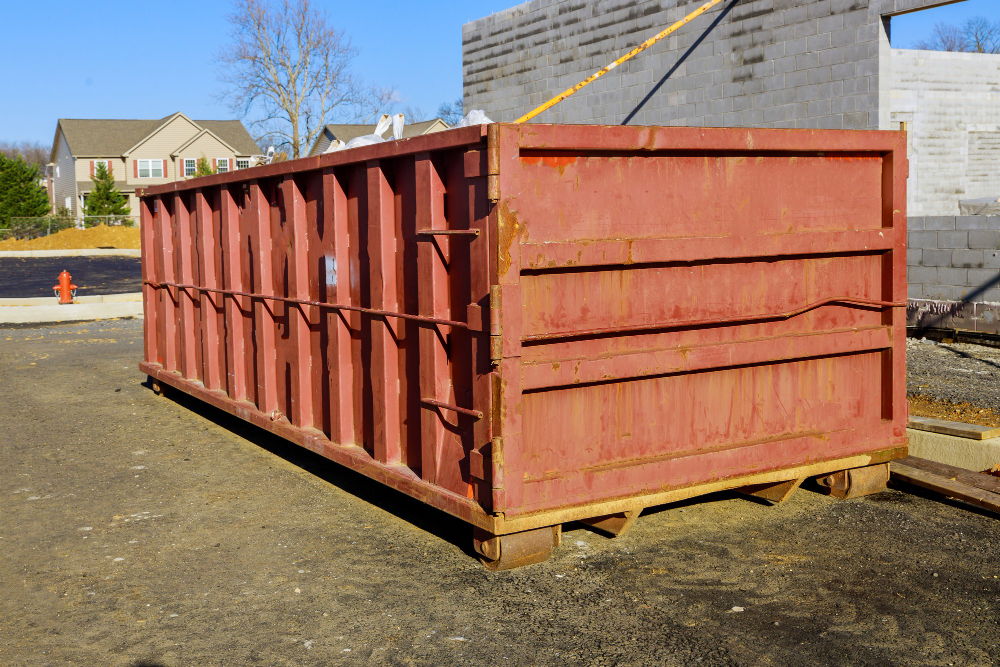How to Use Roll-Off Containers Safely

Using roll-off containers is an efficient and effective way to manage waste for construction projects, home renovations, and cleanouts. However, it's crucial to ensure safe practices to avoid accidents, injuries, and additional costs. If you're looking for a roll-off container rental in Ocala, FL, contact All Waste Dumpster today to get your free quote. In this blog post, we'll provide comprehensive guidelines on how to safely use roll-off containers.
What Are Roll-Off Containers?
Roll-off containers, also known as dumpsters, are large rectangular boxes used to collect and transport waste. They come in various sizes, typically ranging from 10 to 40 cubic yards, and are delivered to your location by a specialized roll-off truck. Once filled, the container is hauled away and the contents are disposed of responsibly.
Why Safety Matters
Improper use of roll-off containers can result in severe injuries, property damage, and legal liabilities. Adhering to safety guidelines ensures that workers, bystanders, and property are protected.
Benefits of Using Roll-Off Containers
Before we dive into safety tips, let's briefly discuss the benefits of using roll-off containers:
- Convenience: Easily manage large volumes of waste without frequent trips to the landfill.
- Efficiency: Speed up your project by having a designated place for waste disposal.
- Cost-Effective: Save money by reducing labor and transportation costs.
- Environmentally Friendly: Proper waste management helps in recycling and reducing landfill waste.
Safety Tips for Using Roll-Off Containers
1. Proper Placement
One of the first steps in using a roll-off container safely is choosing the right location for it.
- Flat Surface: Place the container on a flat, stable surface to prevent it from tipping over.
- Access: Ensure easy accessibility for the roll-off truck and for workers disposing of waste.
- Clear of Obstacles: Keep the area around the container free from obstructions such as power lines, trees, and other structures.
- Proximity: Place the container close enough to the work area to minimize the distance workers need to travel, but far enough to avoid any potential hazards.
2. Load Evenly
Distributing the weight evenly within the container is crucial for stability during transport.
- Avoid Overloading: Do not fill the container beyond its capacity. Most containers have a fill line indicating the maximum load level.
- Distribute Weight Evenly: Place heavier items at the bottom and lighter items on top, ensuring even weight distribution across the container.
- Stay Within Weight Limits: Be aware of the container's weight limit and the type of materials that are allowed.
3. Secure the Load
Ensure that the waste is secure to prevent it from shifting during transport.
- Cover the Container: Use a tarp or cover to keep debris from falling out, especially when transporting the container.
- Close the Door: Always close and secure the container door when not in use and during transport.
4. Avoid Hazardous Materials
Not all materials are suitable for disposal in a roll-off container.
- Check Regulations: Familiarize yourself with local regulations regarding prohibited materials.
- Prohibited Items: Avoid disposing of hazardous materials such as chemicals, flammable substances, and medical waste.
- Special Disposal: Follow guidelines for the safe disposal of electronics, batteries, and other special waste.
5. Wear Protective Gear
Safety gear is essential for anyone handling or working near the roll-off container.
- Gloves: Protect your hands from sharp objects and contaminants.
- Safety Glasses: Shield your eyes from dust, debris, and other potential hazards.
- Hard Hats: Wear a hard hat to protect your head from falling objects.
- High Visibility Clothing: Ensure that workers are easily visible, especially in busy or low-light areas.
6. Follow Loading and Unloading Procedures
Proper loading and unloading procedures minimize the risk of accidents.
- Use a Ramp: When loading heavy items, use a ramp to avoid straining yourself or other workers.
- Team Lifting: For particularly heavy items, use team lifting techniques or mechanical aids to avoid injury.
- Stay Clear: Keep a safe distance from the container while the truck is loading or unloading it.
7. Regular Inspections
Routine inspections of the container and surrounding area help identify and address potential hazards.
- Check for Damage: Inspect the container for any signs of damage, such as rust, holes, or weakened areas.
- Monitor Fill Levels: Regularly check the fill levels to ensure the container is not overloaded.
- Maintain Cleanliness: Keep the area around the container clean and free of debris.
Conclusion
Using roll-off containers safely is paramount for the success of any project that involves significant waste management. By following these safety guidelines, you can ensure the safety of workers and bystanders, protect property, and avoid legal issues. If you need a roll-off container rental in Ocala, FL, contact All Waste Dumpster today to get your free quote and experience hassle-free waste management.